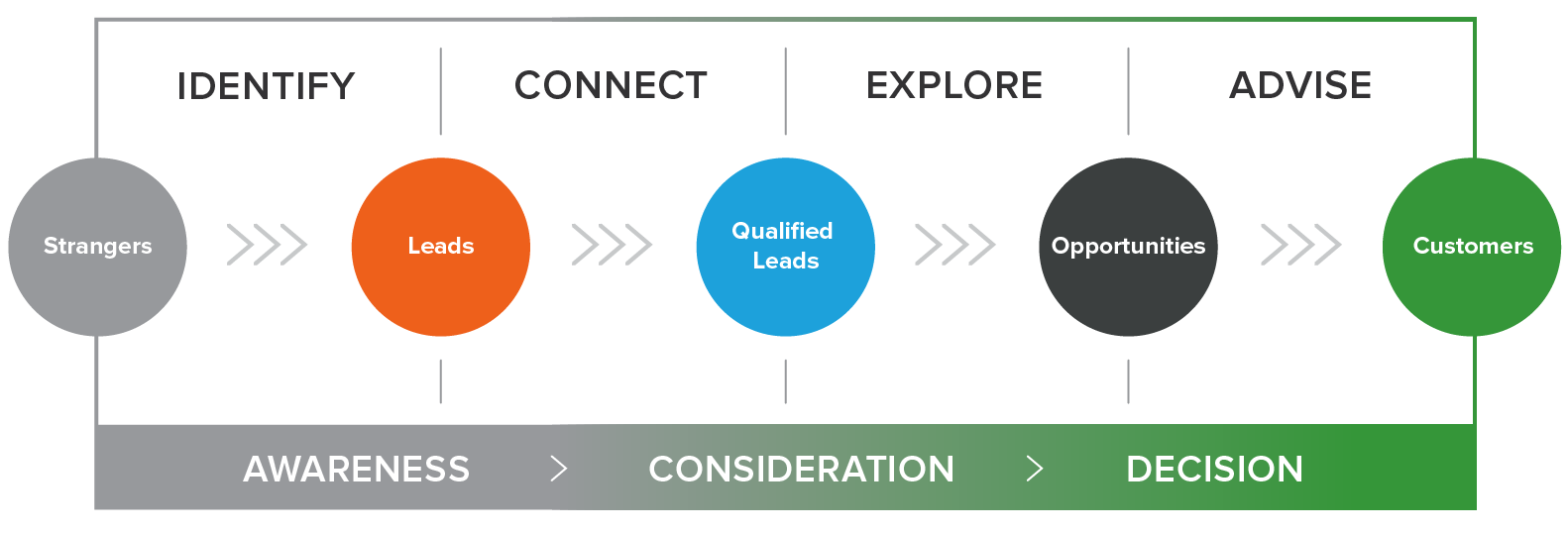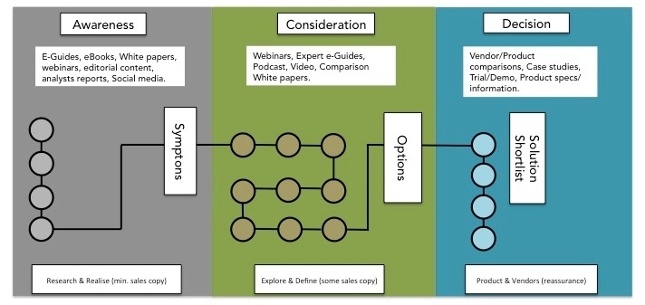5 Ways to improve your chances to close a B2B deal with inbound sales.

As a business it is easy to be lulled into thinking you’re already doing many of the right things because traffic to your website is high. The problem tends not to be volume of traffic but more a lack of conversion from unqualified visitors.
Typically a visitor to your website will give you at most three seconds, and by then they will have either worked out whether to stay or feel like they are in the wrong place and leave.
Today as businesses we are lagging behind the digital curve when it comes to fully exploiting digital to help shape and deliver marketing and sales strategies. And that’s a problem, because the traditional approach to doing business has changed.
Buyers now delay until much later to interact with the seller and use the internet as a major part of the decision making process, instead of sourcing information just from you.
This is a “turning point” in the buyer / seller relationship when the buyer knows exactly what they want, and has a fully researched solution which has shifted the power to a new “seller beware” mantra.
In today’s market, 67% of the buyers journey is now done digitally and buyers actively seek to self-educate. That means it can be difficult to reach an audience through the traditional marketing methods as buyers filter out marketing noise, sometimes at the expense of your company.
So below we have five ways to to help you open up your sales dialogue and put the customer at the core of everything that you do:
1). Educate, Don’t Sell.
In today’s new digital marketplace “helping is the new selling”. If you are going to be able to eventually start a sales dialogue with a prospect your initial contact needs to focus on the added value your bring.
As a subject matter expert offer advice, share your knowledge and educate those searching for insights. At this early stage of their buying journey visitors are looking to identify and articulate what their problem is so that they can find a solution. They are not looking to make a purchase, no matter how hard you try.
To prepare your strategy, ask yourself:
- How do buyers describe their challenges?
- What is the search behaviour of these buyers?
- And ask yourself are you looking to convert a sale at every opportunity or are you willing to develop a relationship and listen?
To introduce an inbound sales perspective there are a number of stages that you need to consider that your buyer will travel through. Moving from just finding about your brand (Awareness), considering your solution to their problem (Consideration) and then buying from you (Decision).
As the buyer passes through each stage there would be a different need for education. The image below is from HubSpot and their visualisation of the inbound sales buying journey.

2). Define The Buyer’s Journey.
When a B2B buyer decides to buy, what might seem like a simple transaction can actually be an intricate set of many interactions, especially when buyers today have such a large number of options to assess or symptoms they are not sure about. This process is a buying journey with three phases: Awareness, Consideration, and Decision.

To help your business connect to and educate a target audience, it needs to have mapped and understood the customer’s buying journey. We see many changes today in buyer behaviour, driven relentlessly by the internet which places immense pressure on businesses to adopt a more buyer-centric approach.
Modern buyers do not rely solely on messages from salespeople today to learn about products and services.
The sales environment as a whole is shifting from the traditional method of B2B prospecting to one that is more buyer-centric (inbound sales). As buyers – before we make a purchase decision, 60% of us rely on Word Of Mouth – friends – social media, 49% on customer references and recommendations, 47% on analyst reports, and 44% on media articles (source HubSpot Inbound Sales Report 2016).
If marketing has one goal, it’s to reach an audience at that one moment in their buying journey when there is an opportunity to influence called the “moment of truth”.
To define the buyer’s journey and adopt a more “buyer-centric” strategy ask yourself:
- Buyer Stage – at what stage is your lead at Awareness, Consideration or Decision?
- What information needs do your prospects have and how are they researching the subject?
- For this type of buyer, do they have a preferred way to digest the content or interact with you digitally?
3) A Buyer Persona Mindset
A buyer persona is a semi-fictional character created as a picture of an ideal customer. These audience profiles are commonly “pen portraits” that help entrench the picture in our mind of the buyer.
It helps to visualise the buyer, so we know who we are writing content for and to tune into the motivations and habits of a persona to know when that moment of truth is going to be triggered.
A well drawn up persona will provide insight that can be picked up by sales and marketing to guide a sales strategy, help marketers design a campaign and work on customer engagement plans.
Often the buyer themselves is not clear on what symptoms they have to be able to identify their problem.
Everything we buy is bought for a reason whether at home or at work, so unless you know the problem, how can you truly hope to offer a solution?
4). Don’t Start With “Can you tell me about your business?”
It may be tempting to open with a question like this, but such a high-level approach tells the buyer that you may not have done your homework.
Start with questions that try to develop an understanding of where the business is at, it’s challenges and goals at a strategic level. What are their goals and the consequences of failure?
If you have done adequate research you will know if they have bought something similar in the past or fit the profile of buyer who would.
Try to understand your contacts buying process, what are the typical obstacles or considerations that you would have to overcome?
5). An Online Value Proposition
To have an impact with your business in today’s marketplace, the more appealing you can position your proposition to customers the more likely you will be able to drive qualified visitor traffic and generate leads.
Below are some tips on how to plan an effective approach:
Today:
Evaluate your buyer persona and their buying journey.
Tomorrow:
Assess how effective your communication strategy is. Does your website provide a positive user experience, do you know which digital touch points you can influence most, do you know how you could improve the overrall customer experience?
Next month:
Don’t forget that to have an impactful marketing strategy, that it needs content to fuel it. To produce content it takes time, and for your customers to search, find and share it you need to have done the research to understand what your buyers’ are looking for.
Next quarter:
Marketing can only make an impact if you allocate time for strategy and planning. Use the closed loop approach of testing, assessing and fine tuning your marketing efforts all the time.
If you cannot measure it – you cannot grow it. It is valuable to assess what the particular pain points are that as a business you address, and then put them into some order of priority.
Take Away
Is this a good time to chat?
Unfortunately it is rare to find a prospect who has been sitting by the phone waiting for a salesperson to call. This question gives your prospect an easy way out, so ask if this is a bad time to call and hopefully with permission expand on the reasons for the call.
To help you open a conversation with a prospect use our checklist below to get you started:
- Ask permission – it’s appropriate to show respect by asking permission to ask questions.
- Start broad, and then get specific – open-ended questions are a good way to start gathering information and put your prospect at ease.
- Build on previous responses – and on your research.
- Use the prospect’s industry buzzwords, if appropriate.
- Keep questions simple.
- Keep questions non-threatening – take the pressure off.
- Focus on desired benefits based on your understanding of their needs.
- Maintain a consultative attitude, exude a relaxed tone of voice and wait for responses.
- Don’t be in a hurry to get to your next appointment.
